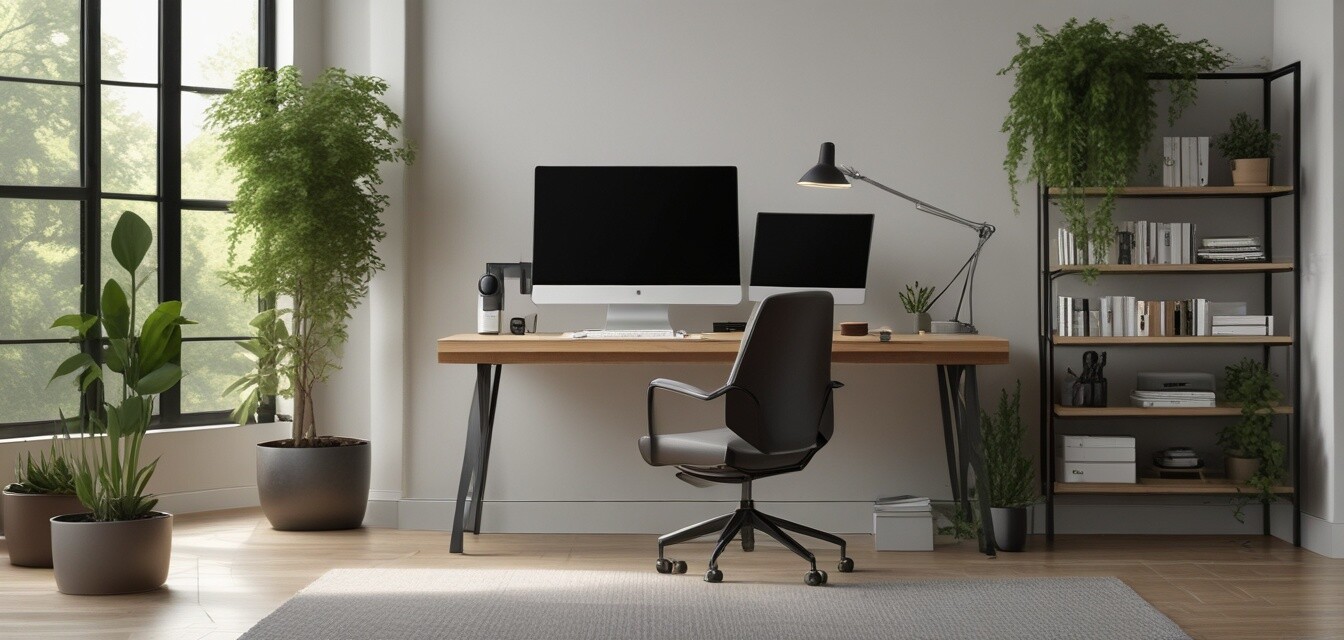
Trends in Home Office Design for 2025
Key Takeaways
- Emphasis on ergonomic furniture to enhance comfort.
- Integration of smart technology in workspace setups.
- Focus on sustainable and eco-friendly materials.
- Use of natural light and biophilic design principles.
- Customization for individual working styles and needs.
The world of home office design is rapidly evolving, especially as more professionals embrace remote work. The upcoming trends for 2025 reflect not just aesthetic preferences but also functional needs that enhance productivity and well-being. Here, we'll explore the key trends shaping home offices for the future.
1. Ergonomic Furniture: The Foundation of Comfort
With increasing awareness of physical health and posture, ergonomic furniture is becoming a central focus for home office designs. By investing in ergonomic chairs and desks, individuals can create a healthier work environment.
| Type of Ergonomic Furniture | Benefits |
|---|---|
| Adjustable Desks | Encourages movement and reduces sedentary behavior. |
| Ergonomic Chairs | Supports good posture and reduces strain. |
| Monitor Stands | Helps maintain eye level with the screen to prevent neck strain. |
2. Smart Technology Integration
As technology continues to advance, integrating smart devices into home office setups is becoming increasingly popular. From smart desks that adjust heights automatically to voice-controlled assistants managing tasks, innovation is key.
Popular Smart Home Devices
- Smart lighting systems that adjust to time of day.
- Wireless charging stations for phones and devices.
- Smart speakers that integrate with calendars and tasks.
3. Sustainable and Eco-Friendly Materials
Home office setups in 2025 are trending towards sustainability. Consumers are increasingly seeking office furniture made from recycled materials or sustainable sources.
Pros
- Promotes environmental responsibility.
- Can enhance aesthetic appeal with natural materials.
- Supports a healthier indoor environment.
Cons
- May come at a higher initial cost.
- Availability may vary depending on the supplier.
4. Biophilic Design Elements
Incorporating natural elements into the workspace can enhance mood and productivity. This is known as biophilic design, which focuses on connecting indoor environments with nature.
Incorporating Biophilia
- Using plants to improve air quality and aesthetics.
- Incorporating natural light and views of outdoor landscapes.
- Choosing natural materials like wood and stone.
5. Customization and Personalization
The trend towards personalization allows individuals to create a workspace that reflects their personal style and workflow needs. This can range from adjustable furniture configurations to decorative choices that inspire creativity.
Ways to Customize Your Home Office
- Choosing a color scheme that promotes productivity.
- Adding personal artwork or motivational quotes.
- Using varied textures and materials for a dynamic look.
Conclusion
As we look towards 2025, the trends in home office design highlight the importance of comfort, technology, and sustainability. By embracing these trends, you can create a workspace that not only looks great but also functions effectively, contributing to your productivity and overall well-being.
Beginners Section
If you're new to designing a home office, here are some tips:
- Start with a good ergonomic chair; it's a worthwhile investment.
- Consider your workspace layout before purchasing furniture to make sure it fits well.
- Incorporate both task and ambient lighting for a balanced environment.
For more insights, check out our articles on buying guides and latest trends in home office setups!